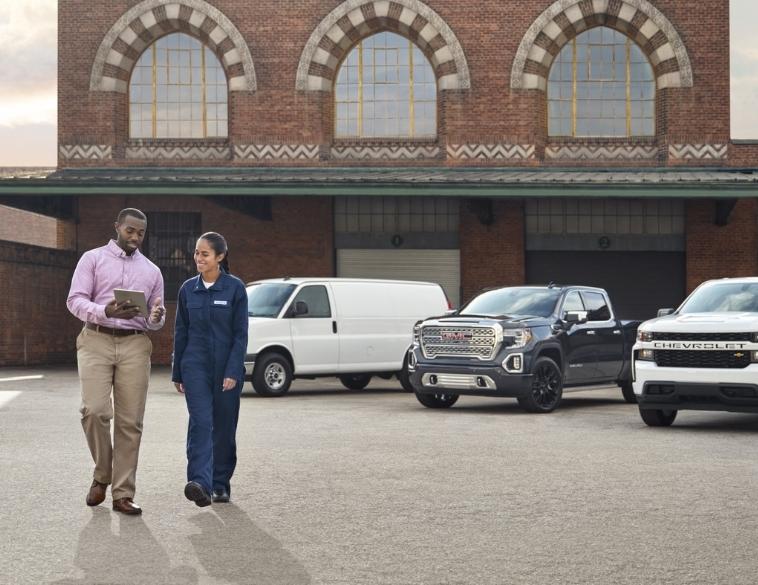With prices rising, fleet managers need to think ahead and strategize in order to manage costs and budgets effectively.
Global supply chain challenges have made it impossible for fleet managers to purchase the vehicles they need now, and according to recent expert predictions, we shouldn’t expect things to get back to normal until maybe 2024.
What makes the situation even more frustrating is the fact that inflation, along with supply and demand dynamics is driving up the cost of vehicles. So when new vehicles do become available in the future, it’s guaranteed that they’ll cost a lot more than fleet managers are used to paying.
Jennifer Chapman, Marketing & Sales Manager—Central Region, Foss National Leasing offers the example of orders placed with one of the major OEMs. “Let’s say, you’re submitting an order for 40 trucks,” she explains. “But this OEM might only accept 10 per quarter. So that first 10 might cost X dollars, but the next 10 might cost Y dollars because there’s no price protection anymore. And then the next two groups of 10 could be even higher if they even end up giving you the allocation.”
No matter how you look at it, tomorrow’s vehicles, whenever they become available are going to be more expensive. Chapman suggests planning bigger budgets for the foreseeable future. “Factor in at least a 10% increase per year for your budget,” she explains. “Prices are going up on vehicles, while fleet incentives have gone away.”
She adds that the cost of a vehicle is only part of a much bigger challenge that fleet managers have to wrap their minds around. “Because the number of vehicles you can order has gone down, you’ll have to spend more on maintenance and parts for your existing vehicles,” she says. “Then there’s the downtime when vehicles break down if you haven’t been doing your maintenance, as well as the cost of a rental if you can find one.”
Rob Luba, Department Head, Supply Chain at Holman is dealing with the same kind of challenges. “We’ve seen an almost double-digit percentage increase in the cap cost of new vehicles over the past couple of years,” he says. “But the bigger driver of the increase in cost is the fact that fleet incentives are either minimal or have been eliminated entirely in some cases. That’s the big variable that’s driving the cost for fleets.”
Luba says that it’s important for fleet managers to communicate these realities to their finance teams to help them understand what’s going on in the market, and why budgets need to increase. “Manufacturers release the pricing, and for the most part, there’s no negotiation,” he adds.
Price hikes
Multiple price hikes throughout the model year are now the norm in some cases. “Ordering early in the model year cycle is more important than ever,” Luba explains. “The three pieces of advice I give every client is order early, order early, order early. You have a better chance of receiving the units you order and less risk of future price increases as the model year goes on when you order as early as possible. We saw some models last year with six price increases in one model year. That’s just unprecedented.”
If you’re thinking of buying fleet vehicles from dealer inventory, Luba warns against it. “Avoid buying vehicles out of dealer inventory, wherever possible,” he says. “Submitting factory orders and avoiding dealer stock purchases is an age-old best practice, but these days, you’re fighting extraordinary retail demand. Plus, dealers simply don’t have supply.”
Luba estimates that buying from dealer inventory will increase your cap cost by 15% or more “because you usually get equipment you don’t want, there’s a higher markup, and there are other fees that are being passed on to clients from the dealer.”
Dealing with price uncertainty
Gerry Corcoran, National Director, Commercial Remarketing Services with Jim Pattison Lease offers some sobering advice for fleet managers and business owners who are hesitant to order their vehicles because they’re not sure what the prices will be.
“You need to place those orders,” he stresses. “You can’t sit back and hesitate because you’re not sure what the final cost will be. Unless you’re getting out of the business you’re in, you’re going to need vehicles. So if you don’t order, you don’t get in the queue, and you don’t ask for allocation, then you likely won’t get the vehicles you need to operate your business.”
Corcoran offers a bit of hope to fleet managers as we all watch prices rise. He explains that the higher cost of future new vehicles will be offset by the higher value of the vehicles fleet managers will be remarketing.
“It wouldn’t hurt to take some of the equity in the older vehicles and put it towards the new vehicles,” he explains. That’s certainly good advice as we deal with a market that was described by Holman’s Luba as “unprecedented.”



